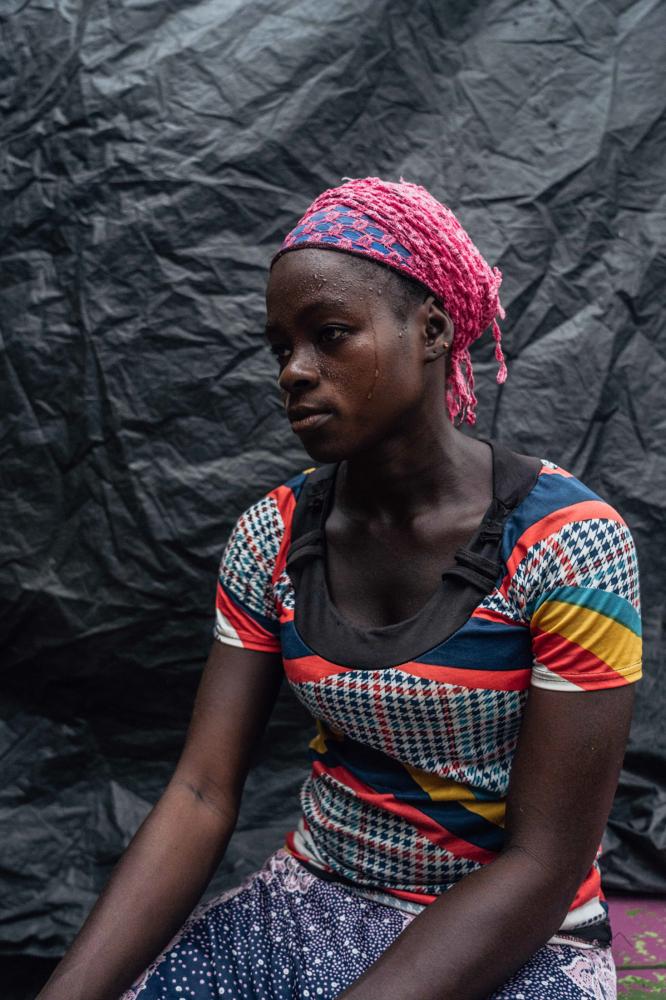Private Story
Kayayei Sisters
Summary
Since the 80s teenage girls have been migrating from Ghana’s northern regions to the capital Accra in search of employment opportunities to escape poverty, early marriage, and conflict in their villages. Many of these young women have no formal education and on their arrival to Accra often end up working as kayayei (female head porters). For long hours in the sweltering heat, the kayayei carry goods on their heads through Accra’s busy markets for as little as few dollars a day. It is estimated there are more than 160,000 kayayie in Accra.
During my research, I saw many teenage girls who spoke Northern Ghana dialect and carried massive bales of clothes weighing up to 120 pounds on their heads. Sometimes they also carried babies strapped to their backs while carrying the heavy bales navigating the narrow streets of Accra’s busiest market.
I talked to one of the girls named Rahina when she told me she works as a kayayei- female head porter. I asked Rahina if I can tell her story and follow her around the market with my camera, she agreed and that’s how this story came about. However, later I found out that “kayayei” in Ga (a local dialect in Accra) also means “she who carries the burden”.
I felt the importance of telling Rahina's story because it resonates with thousands of vulnerable young women who migrate from the Northern regions of Ghana to Accra in search of a better life just to face exploitation and sexual violence. Without any support from the government, many of them end up becoming slaves of the system.
Many kayayei women have no family in the city, and without a place to stay they end up sleeping at night in the market. That makes them extremely vulnerable to gender-based violence, including rape and its potential consequences, such as unwanted pregnancy and unsafe abortion.
Rahina used to sleep in the market but later moved to Accra’s largest slum Old Fadama to share one room with another 10 kayayei girls. Old Fadama, sometimes referred to by locals as “Sodom and Gomorrah” is one of the world’s largest electronic waste burning sites and one of the most toxic places in the world. Residents of Old Fadama face serious health threats from breathing in toxic fumes from burning e-waste. The slum is also a home to armed robbers, prostitutes, and drug dealers where young vulnerable women can become victims of sexual assaults.
Rahina told me she dreams of returning back home to the North and with the money she earned from working as kayayei she plans to start her seamstress business. We made arrangements to come and visit her hometown and family in the North but our plans were abruptly interrupted by the news of the Covid -19 pandemic.
Kayayei became badly affected by the Covid -19 pandemic as they could not isolate, practice social distancing, and most importantly could not go back to work at the market. The news of the lockdown swept through the capital of Accra and many migrants were trying to evacuate the city as fast as possible. Later I found out that Rahina and her sister boarded a truck to leave the city as soon as possible.
I returned to the market many times but never saw Rahina again.
With the help of the grant, I intend to continue my work with kayayei in the Kantamanto market. I want to show different sides of their lives – not just their work and struggles in the Kantamanto market but also their social life in Accra and family life back in their hometowns. The majority of kayayei migrate to Accra until they earn enough money to go back home. Many of them buy houses or start their businesses with the money they earned in Accra. I would like to challenge the common narrative of kayayei as the ones that carry the burden and show different sides of their lives. I am still hoping to find Rahina with the help of some contacts at the market and document her new life in the North.
















